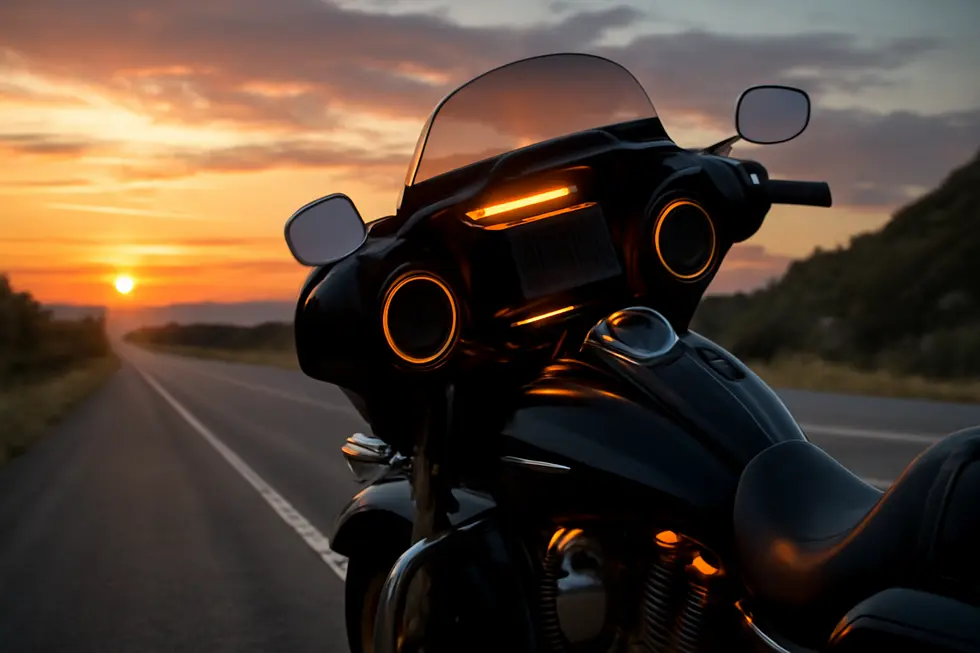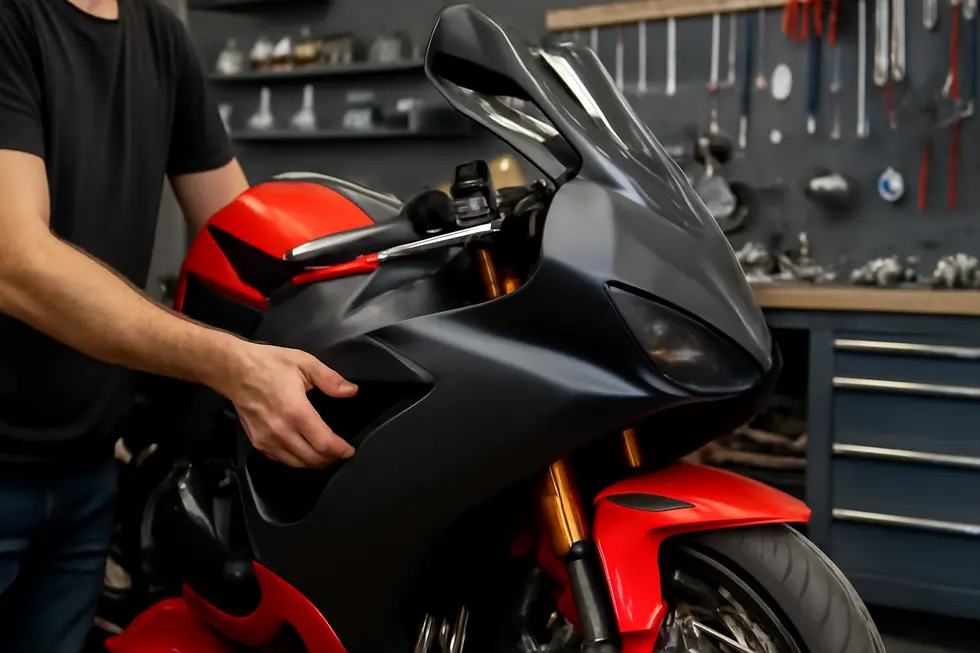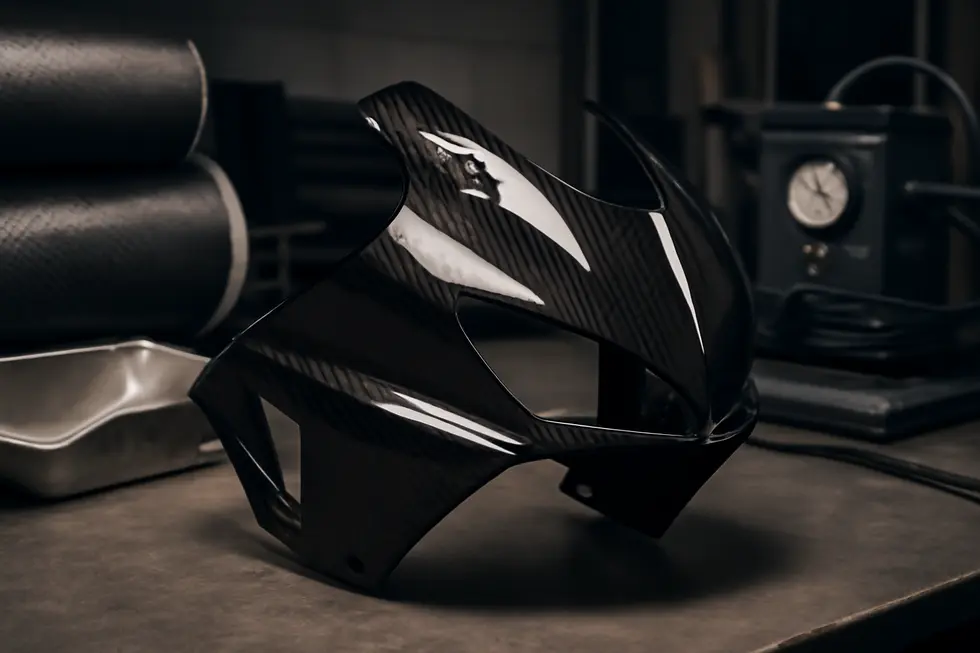Mastering Decal Removal from Motorcycle Fairings: A Comprehensive Guide for Business Owners
September 23, 2025 | by summitfairings
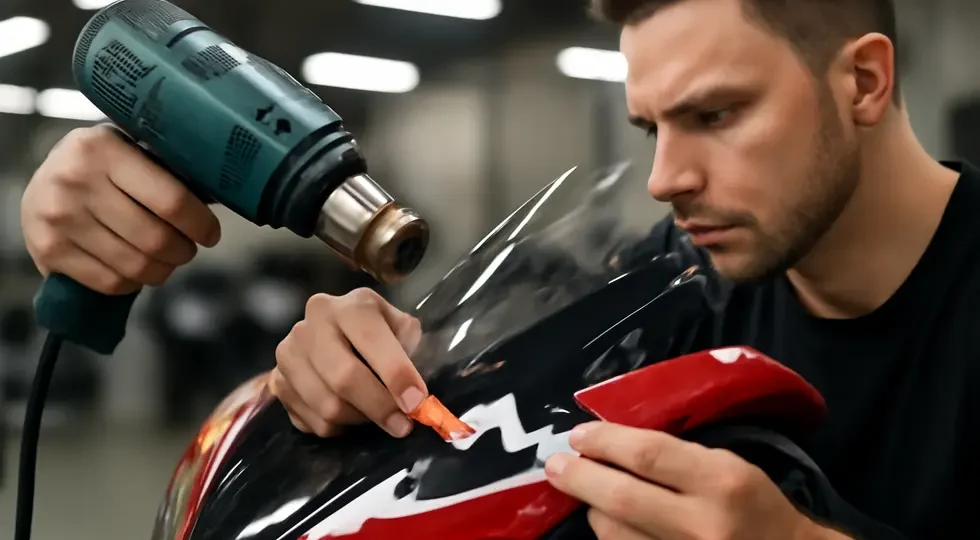
Introduction
Efficient and careful decal removal from motorcycle fairings is essential for business owners aiming to maintain the quality and appearance of their inventory or customer motorcycles. Whether preparing fairings for repainting, replacement, or rebranding, understanding a methodical approach ensures the underlying paint and surface remain undamaged. This process hinges on four key stages: properly heating the adhesive to soften it, selecting the right peeling technique and tools, safely removing residual adhesive without harming the surface, and final cleaning to restore the fairing’s pristine finish. Each chapter provides targeted insights tailored for businesses that demand both quality and professionalism, empowering owners to optimize decal removal with confidence and care.
Tables of Contents
Chapter 1: Mastering Heat Techniques to Soften Adhesive on Motorcycle Fairings
- Effective Use of Heat Guns and Hair Dryers for Safe Adhesive Softening on Fairings
- Effective Steps to Soften Adhesive and Remove Decals Without Damaging Motorcycle Fairings
- Mastering Residue Removal: Managing Adhesive Leftovers After Heating and Peeling Motorcycle Decals
- Mastering Controlled Heat Application: Safeguarding Your Motorcycle Fairings While Softening Adhesives
- Evaluating Heat Softening and Residue Removal Methods for Flawless Decal Detachment
Chapter 2: Peeling Techniques in How to Remove Decals from Motorcycle Fairings: Tools and Methods
- Mastering Controlled Heat Application to Safely Loosen Decals on Motorcycle Fairings
- Mastering Gentle Peel: Combining Heat and Tools for Safe Decal Removal
- Essential Tools and Techniques for Safely Peeling Decals from Motorcycle Fairings
- Effective Adhesive Residue Removal: Safeguarding Motorcycle Fairings After Decal Peeling
- Essential Surface Care and Protection After Decal Peeling on Motorcycle Fairings
Chapter 3: Adhesive Residue Removal in How to Remove Decals from Motorcycle Fairings: Chemicals and Safety
- Selecting and Using Safe Chemical Agents for Effective Adhesive Residue Removal
- Gentle Application Methods and Protecting Your Motorcycle Fairings During Adhesive Removal
- Essential Safety and Eco-Friendly Practices for Adhesive Residue Removal on Motorcycle Fairings
- Practical Chemical Methods and Protective Steps for Safe Adhesive Residue Removal on Motorcycle Fairings
- Safe and Effective Consumer Strategies for Commercial Adhesive Removers on Motorcycle Fairings
Chapter 4: Final Cleaning and Surface Restoration in How to Remove Decals from Motorcycle Fairings
- Mastering Gentle Solvent Cleaning and Surface Care for Pristine Motorcycle Fairings
- Balancing Cost and Quality: Smart Choices for Final Cleaning and Restoration of Motorcycle Fairings
- Navigating Geopolitical Challenges in Decal Removal and Surface Restoration Products
- Eco-Conscious Techniques and Societal Trends Shaping Final Cleaning and Surface Restoration
- Modern Tools and Techniques Enhancing Final Cleaning and Surface Restoration
Chapter 1: Mastering Heat Techniques to Soften Adhesive on Motorcycle Fairings
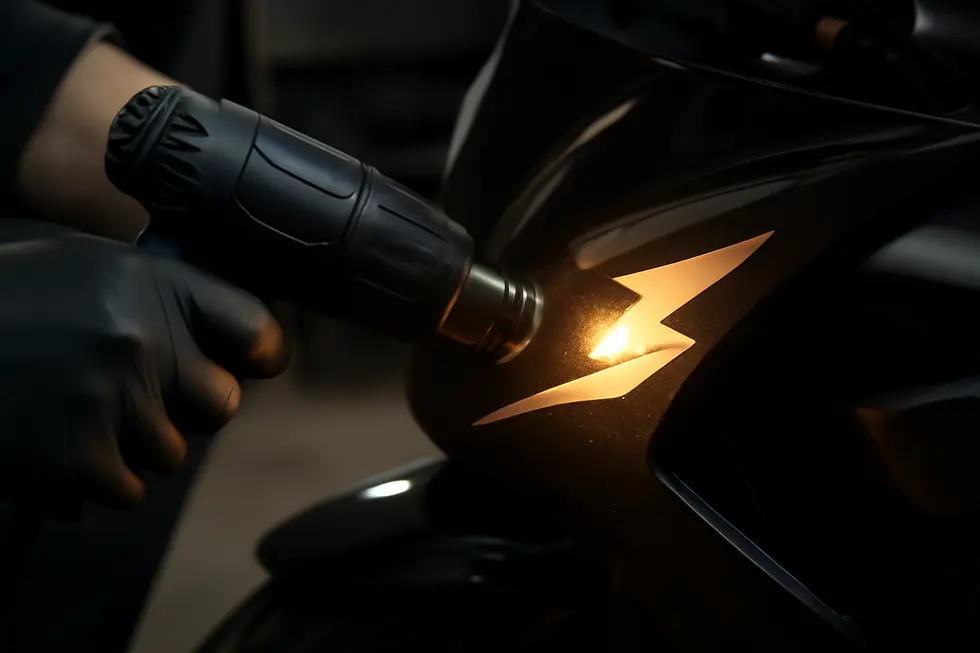
1. Effective Use of Heat Guns and Hair Dryers for Safe Adhesive Softening on Fairings
Successfully softening adhesive on motorcycle fairings starts with controlled heat application. Using a heat gun or hair dryer set to low or medium, gently warm the decal’s edges, moving the source steadily to prevent paint damage or warping. This gradual thermal softening loosens the adhesive, making the decal easier to lift without tearing. Peeling should be done at a consistent 45-degree angle to reduce stress on the surface and minimize residue. If the decal resists, increase heat cautiously rather than forcing removal. Post-peeling, use a soft cloth with adhesive remover or rubbing alcohol to clear any sticky residue, then cleanse with soapy water to restore the finish. This technique ensures both effective decal removal and surface protection, ideal for preserving the appearance of painted plastic fairings. For enthusiasts keen on detail, more tips can be found at Explore the Best Motorcycle Fairings at Summit Fairings. Additional guidance is available in detailed tutorials at https://www.signs.com/clear-vehicle-decals/.
2. Effective Steps to Soften Adhesive and Remove Decals Without Damaging Motorcycle Fairings
Softening the adhesive beneath a motorcycle decal using carefully applied heat is the cornerstone of successful, damage-free removal. Begin by gently warming the decal area with a heat gun or hair dryer held a few inches away, moving evenly to avoid overheating the paint or plastic. This controlled warming increases the adhesive’s pliability, making it easier to lift the decal without tearing or cracking the surface. Once sufficiently soft, start peeling the decal back slowly from one corner using fingers or a plastic scraper edge, which minimizes the risk of scratching. Any residual sticky adhesive is best treated with a gentle solvent—such as rubbing alcohol or a mild soap solution—that loosens residue without harming the finish. Following this process restores the fairing’s clean and smooth appearance while preserving paint integrity. For enthusiasts interested in exploring more about custom fairings and care, discover unmatched choices in motorcycle fairings at Summit Fairings. Detailed steps are also well illustrated in clear vehicle decal removal guides like those from Signs.com.
3. Mastering Residue Removal: Managing Adhesive Leftovers After Heating and Peeling Motorcycle Decals
After softening the decal adhesive with gentle heat and peeling it away, addressing the stubborn residue is crucial to preserve your fairing’s finish. Carefully applied adhesive removers, rubbing alcohol, or even household solutions like diluted dish soap can dissolve remaining sticky deposits without harming paint or plastic surfaces. Use a soft cloth to apply the solvent in circular motions, allowing it time to penetrate and break down adhesive traces. Avoid harsh chemicals or metal tools to prevent scratches and discoloration. Following residue removal, thoroughly wash the area with soapy water to eliminate any chemical remnants and restore a clean, smooth surface. This step ensures your motorcycle fairings remain pristine and ready for new decals or protective coatings. For enthusiasts seeking more comprehensive insights into motorcycle fairings and maintenance, the Explore the Best Motorcycle Fairings at Summit Fairings resource offers valuable guidance.
4. Mastering Controlled Heat Application: Safeguarding Your Motorcycle Fairings While Softening Adhesives
Applying controlled heat is pivotal for safely softening decal adhesives on motorcycle fairings without compromising their finish. Using a heat gun or hair dryer on a low setting gently warms the adhesive, loosening its grip and enabling smooth peeling from one corner without undue force. It’s critical to test heat intensity on a hidden spot first to avoid warping or discoloring delicate plastics. Once softened, plastic scrapers or fingertips help lift edges while preventing scratches; metal tools should be avoided. Adhesive residues can be delicately dissolved using surface-safe removers, applied sparingly in a well-ventilated area. After removal, thorough washing with soapy water restores the fairing’s clean surface, preparing it for new decals or coatings. This patient, methodical approach balances effective softening with protective care, maintaining the fairing’s integrity and appearance. For comprehensive insights, explore expert guidance on the best motorcycle fairings.
5. Evaluating Heat Softening and Residue Removal Methods for Flawless Decal Detachment
Heating the adhesive beneath motorcycle decals is paramount for effortless removal without damaging the paint or fairing material. Using a heat gun or hair dryer evenly warms the vinyl, softening the glue beneath and allowing the decal to peel away smoothly. After heating, gently lifting from a corner with fingers or a plastic scraper minimizes the risk of scratches. Despite careful peeling, adhesive remnants often persist; targeted use of mild solvents such as rubbing alcohol or gentle adhesive removers effectively dissolves these residues. Mechanical aids like plastic scrapers or eraser wheels can assist but require caution to avoid surface harm. Balancing heat application and residue cleaning ensures the fairing’s finish remains pristine, preserving its aesthetic and structural integrity throughout the process. For a deeper dive into selecting the right fairings and maintenance tips, see this comprehensive guide on explore the best motorcycle fairings at Summit Fairings.
Further details on heat and adhesive removal techniques can be found at Signs.com decal removal guide.
Chapter 2: Peeling Techniques in How to Remove Decals from Motorcycle Fairings: Tools and Methods
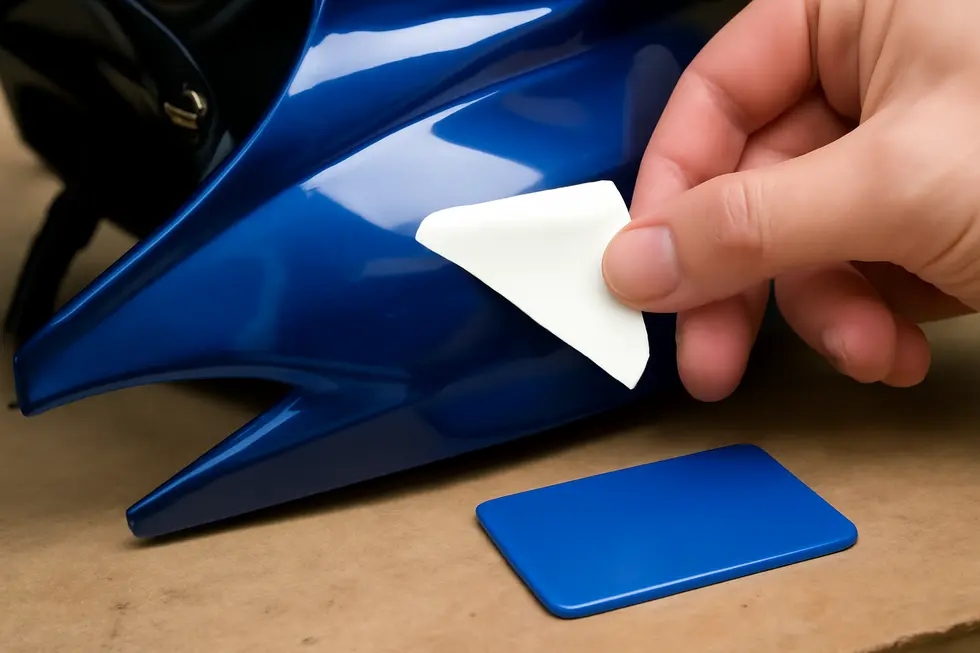
1. Mastering Controlled Heat Application to Safely Loosen Decals on Motorcycle Fairings
Applying controlled heat is a vital step in decal removal for motorcycle fairings, facilitating a gentle and effective peel without damaging the surface. Using a heat gun or hair dryer on a low-to-medium setting, the decal is warmed evenly by moving the heat source steadily over its surface. This process softens the adhesive beneath the vinyl, weakening its grip and allowing the decal to lift off smoothly from one corner. Importantly, consistent motion prevents overheating or warping the fairing’s paint. Combined with careful peeling, heat ensures minimal risk of tearing or residue buildup. After decaling, residual adhesive can be safely addressed with solvents like rubbing alcohol. This technique parallels best practices used across vehicle decal removal and highlights the crucial role of thermal softening in maintaining fairing integrity throughout the process. For visual guidance on handling fairings with care, explore resources like the Summit Fairings blog. For more, see additional expert tips at https://www.signs.com/clear-vehicle-decals/
2. Mastering Gentle Peel: Combining Heat and Tools for Safe Decal Removal
Careful peeling of decals from motorcycle fairings hinges on a precise balance of gentle mechanical action and controlled heat. Begin by lifting a corner using a fingernail or plastic scraper, avoiding metal to protect the fairing’s surface. A heat gun or hair dryer set to low, moved steadily over the decal, softens the adhesive, allowing the vinyl to release smoothly. Peel back slowly at a low angle, applying more heat if resistance persists, minimizing risk to paint and plastic integrity. Once removed, address leftover adhesive with gentle solvents like rubbing alcohol or mild soap, applying them with a microfiber cloth to preserve the finish. For stubborn residue, natural options like diluted vinegar or baby oil may safely loosen adhesive without damage. This measured approach ensures effective decal removal while maintaining the fairing’s appearance and durability. For expert guidance on fairing care and decal techniques, explore detailed tips from Summit Fairings and external resources like Signs.com’s decal removal instructions.
3. Essential Tools and Techniques for Safely Peeling Decals from Motorcycle Fairings
Removing decals from motorcycle fairings requires a blend of specialized tools and delicate handling to protect the paint and surface. Key tools include plastic scrapers or putty knives, chosen to lift decals gently without scratching. Heat guns or hair dryers apply controlled warmth to soften adhesives, making peeling smoother and minimizing residue. Razor blades, used with caution, help carefully loosen decal edges and remove stubborn adhesive spots, but must never gouge the fairing. Once the decal is lifted, solvents such as rubbing alcohol or dedicated adhesive removers dissolve remaining residue without harming the finish. Microfiber cloths or soft shop towels complete the process by safely wiping away solvent and debris. This careful toolbox and technique balance ensure decals come off cleanly and the fairing remains flawless, making them indispensable for enthusiasts aiming for quality results. For deeper insights into these methods, resources like Signs.com provide excellent guidance.
4. Effective Adhesive Residue Removal: Safeguarding Motorcycle Fairings After Decal Peeling
Removing adhesive residue after decal peeling is crucial to preserve the fairing’s finish while restoring its clean look. Begin by reheating the area gently with a hair dryer or heat gun, keeping the heat moving to soften any stubborn adhesive. This step prevents damage while easing residue loosening. Next, apply a surface-safe adhesive remover or mild solvents like rubbing alcohol or a diluted vinegar solution to dissolve leftover sticky material. Use a soft cloth or non-abrasive scraper to wipe away residue carefully, avoiding metal tools that risk scratches. For tougher adhesive buildup, specialized removers designed for plastic and painted surfaces can be employed safely. Afterward, cleanse thoroughly with soapy water and dry with a microfiber cloth to remove chemical traces and restore shine. This balanced method ensures thorough residue removal without compromising the fairing’s integrity or appearance. For additional insights on preserving fairing aesthetics, explore premium motorcycle fairings and care tips and see a detailed approach on effective adhesive treatments at Signs.com.
5. Essential Surface Care and Protection After Decal Peeling on Motorcycle Fairings
Proper surface care following decal removal is vital to maintain the motorcycle fairing’s pristine finish and durability. Once the decal is peeled off using heat softening and gentle lifting, residual adhesive should be carefully removed with a plastic scraper or mild solvent designed for automotive plastics to avoid scratches. It is important to clean the area with a mild soap solution or motorcycle-safe cleaner that respects the paint and plastic integrity. After cleaning, inspect the surface for any imperfections such as minor scratches or dullness; polishing with a fine automotive polish can help restore gloss where needed. To protect the fairing, apply a quality wax or sealant, which guards against UV rays, moisture, and contaminants, extending the life of the finish. Avoid exposing the treated area to high-pressure water immediately after treatment to prevent damage or peeling. These precise aftercare steps ensure that the fairing remains ready for new decals and continues to look flawless. For more on fairing care and upgrades, explore affordable motorcycle fairings at Summit Fairings. Additional guidance on gentle decal removal can be found at Clear Vehicle Decals Removal and Care – Signs.com.
Chapter 3: Adhesive Residue Removal in How to Remove Decals from Motorcycle Fairings: Chemicals and Safety
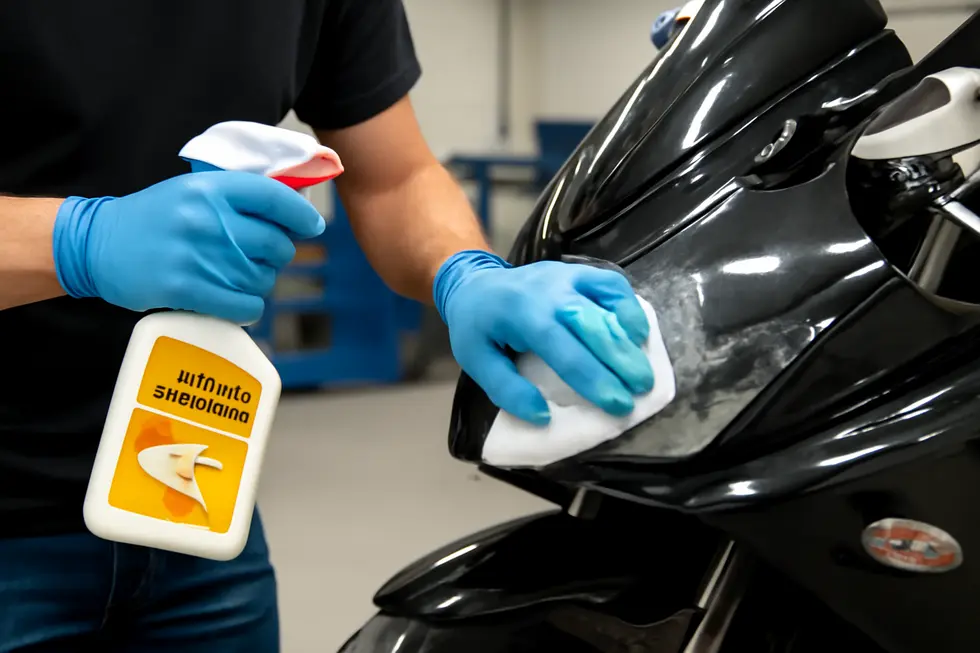
1. Selecting and Using Safe Chemical Agents for Effective Adhesive Residue Removal
Removing adhesive residue from motorcycle fairings requires chemical agents that balance efficacy and surface safety. Isopropyl alcohol is a preferred choice due to its mild nature and effectiveness in dissolving adhesive without harming plastic or paint. Automotive-specific adhesive removers offer targeted solvent power designed to safely break down sticky residues on plastics, provided they are tested first on inconspicuous areas. Citrus-based or mild solvent cleaners also serve as gentle alternatives. Crucially, harsh chemicals like acetone or paint thinner should be avoided unless confirmed safe, as they risk damaging the fairing’s finish. When applying these agents, gloves and ventilation protect the user from irritation and fumes. After softening the residue with the chemical, wiping with a soft cloth removes it cleanly, followed by a rinse with soapy water to restore the surface. For detailed insights about maintaining fairing integrity during maintenance, explore affordable motorcycle fairings and care tips.
2. Gentle Application Methods and Protecting Your Motorcycle Fairings During Adhesive Removal
Removing adhesive residue from motorcycle fairings demands careful techniques that prioritize surface safety. Always begin by testing any adhesive remover in an inconspicuous spot to confirm it won’t cause discoloration or damage. Applying solvents like rubbing alcohol or mild adhesive removers should be done gently with a soft cloth or sponge, avoiding harsh scrubbing that risks scratching painted or plastic surfaces. Allow solvents to dwell briefly to soften residue, improving removal efficacy while reducing abrasion. Use plastic scrapers or fingernails rather than metal tools to lift adhesive safely. After residue removal, wipe the area with a damp cloth to clear solvent traces and prevent damage. Considering the sensitivity of ABS plastic and paint finishes, avoid harsh chemicals and prolonged solvent exposure. Finishing with a protective wax layer helps restore gloss and shields against UV or environmental wear. For professional tips and detailed guidance, visit Explore the Best Motorcycle Fairings at Summit Fairings. More in-depth instructions and solvent safety are available through specialized sources like Kings Motorcycle Fairings.
3. Essential Safety and Eco-Friendly Practices for Adhesive Residue Removal on Motorcycle Fairings
Removing adhesive residue from motorcycle fairings demands strict safety measures and environmental mindfulness to preserve both the bike’s finish and user well-being. Always choose gentle, non-abrasive cleaners like mild dish soap and warm water to avoid damaging paint or plastic surfaces. When stronger solvents such as rubbing alcohol are necessary, ensure adequate ventilation to prevent inhaling fumes. Wearing gloves and eye protection minimizes risks of irritation from chemical exposure. It’s crucial to test solvents on small, hidden sections first to avoid discoloration. Use soft cloths with light pressure rather than abrasive tools to protect the fairing’s surface. Environmentally, dispose of used solvents and contaminated cloths according to hazardous waste guidelines, never down drains. Opt for biodegradable cleaners when possible, and reduce chemical reliance by soaking residues in soapy water first. Following these practices safeguards your motorcycle’s aesthetics while promoting safe, responsible decal removal. For more on gentle care of ABS plastic fairings, see explore the best motorcycle fairings at Summit Fairings.
4. Practical Chemical Methods and Protective Steps for Safe Adhesive Residue Removal on Motorcycle Fairings
Removing adhesive residue after decal peeling requires a delicate balance of effective solvents and careful application to protect the fairing’s finish. Start by applying a tested adhesive remover like isopropyl alcohol or a citrus-based solvent to a small area, allowing it to soften the sticky residue without harming paint. Use a soft cloth or plastic scraper to gently lift the softened adhesive, avoiding any metal tools that could scratch the surface. Repeat this treatment cautiously for stubborn patches, ensuring each solvent application has time to work. After complete residue removal, wash the area with mild soap and water to eliminate chemical traces, then dry thoroughly with a microfiber cloth. Throughout the process, work in a ventilated space and wear gloves to safeguard yourself from solvent fumes and skin contact. These carefully controlled chemical and mechanical steps preserve both the fairing’s integrity and your safety. For more detailed advice, explore the best motorcycle fairings and maintenance techniques.
Reference: Comprehensive decal removal and residue cleaning guide
5. Safe and Effective Consumer Strategies for Commercial Adhesive Removers on Motorcycle Fairings
Removing adhesive residue from motorcycle fairings requires balanced use of commercial products and consumer precautions to protect painted surfaces. Automotive-specific adhesive removers are formulated to dissolve tough residues gently, often used with a soft microfiber cloth to prevent scratches. Common solvents like rubbing alcohol provide a milder option, though they may need repeated applications, while stronger solvents such as acetone demand prior testing on discreet areas to avoid discoloration or damage. Consumers should apply gentle pressure, avoid abrasive tools, and allow solvents to penetrate the adhesive thoroughly before wiping. Proper ventilation is crucial when working with chemical removers to reduce inhalation risks. Complementing solvent use with mild heat softens residual adhesive, enabling safer removal. Afterward, washing the area with soapy water removes chemical traces, preserving the fairing’s finish. For further guidance on adhesive residue removal techniques and safety, see this comprehensive resource. For more insights into protecting motorcycle surfaces during maintenance, explore Summit Fairings’ expert advice at Your Ultimate Source for Affordable Motorcycle Fairings.
Chapter 4: Final Cleaning and Surface Restoration in How to Remove Decals from Motorcycle Fairings
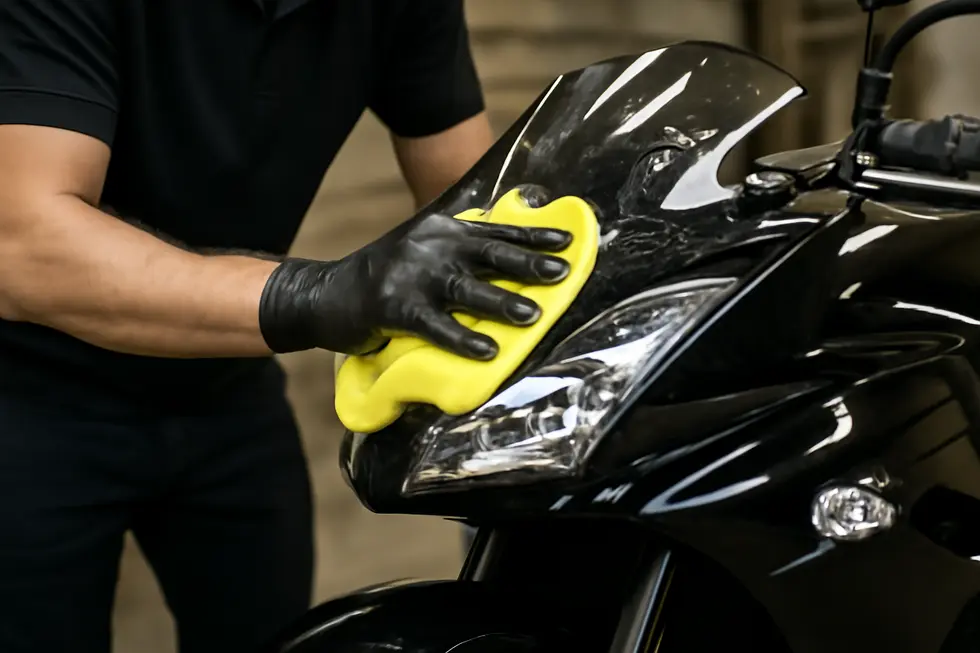
1. Mastering Gentle Solvent Cleaning and Surface Care for Pristine Motorcycle Fairings
After removing decals from motorcycle fairings, a careful cleaning and restoration process is essential to preserve the finish. Begin by washing the area with mild soap and water using a soft cloth or microfiber towel to eliminate any leftover adhesive or solvent residues. Avoid harsh chemicals or abrasive pads that might dull or scratch the surface. Once dry, apply a wax or polish specifically formulated for ABS plastics or painted surfaces. This treatment not only restores gloss and color vibrancy but also adds a protective barrier against UV damage and environmental wear. Use a soft applicator pad and buff gently to maintain the integrity of the fairing. To extend the fresh look, keep the bike sheltered from prolonged sun exposure and consider using a protective cover with UV protection. Consistent gentle washing and waxing help sustain the fairing’s appearance over time, ensuring it remains in showroom condition. For more insights on maintaining motorcycle fairings with care, visit Explore the Best Motorcycle Fairings at Summit Fairings.
Source: Kings Motorcycle Fairings blog.
2. Balancing Cost and Quality: Smart Choices for Final Cleaning and Restoration of Motorcycle Fairings
Economic considerations in final cleaning and surface restoration emphasize choosing materials and techniques that protect the fairing while minimizing expenses. Investing in high-quality vinyl decals with low-adhesion adhesives reduces residue and damage, lowering repair costs. Using gentle cleaning agents like mild soap and soft microfiber cloths is both affordable and safer compared to harsh chemicals or abrasive tools, which risk degrading the finish and increasing restoration needs. Avoiding aggressive mechanical methods such as power washing prevents delamination or edge lifting, further protecting long-term integrity. Although premium decals and careful cleaning may imply higher upfront costs, these measures reduce the risk and expense of refinishing or repainting damaged fairings. For enthusiasts seeking to reapply graphics, partial wraps offer a cost-effective alternative to full replacements. Utilizing these balanced strategies supports durable results while controlling restoration costs, preserving both appearance and budget. For further insights on fairing options, explore affordable and quality motorcycle fairings at Summit Fairings.
3. Navigating Geopolitical Challenges in Decal Removal and Surface Restoration Products
Geopolitical factors greatly influence the availability and quality of decal removal and surface restoration products around the world. Regions with restricted imports may lack access to specialized adhesives removers, gentle cleaning agents, or protective waxes tailored for motorcycle fairings. This scarcity forces many users to rely on locally sourced alternatives that often vary in effectiveness and can risk damaging the painted surface. Despite these constraints, careful techniques—such as using controlled heat to soften decals and plastic tools to lift them—remain essential to minimize surface harm. Final cleaning typically involves mild soaps and soft cloths to preserve the finish, while applying protective wax restores gloss and guards against UV exposure. These universal methods help maintain fairing integrity globally, but product availability must be considered for optimal results. For broad guidance on sourcing fairing components and care products, explore reliable insights at Summit Fairings’ blog. More detailed nuances on geopolitical impacts can be found at Kings Motorcycle Fairings.
4. Eco-Conscious Techniques and Societal Trends Shaping Final Cleaning and Surface Restoration
Final cleaning and surface restoration in decal removal reflect growing societal preferences for environmentally responsible methods. Enthusiasts increasingly favor gentle, non-toxic cleaners and minimal use of harsh solvents to protect both the motorcycle’s finish and the environment. Heating techniques, like using a heat gun or hair dryer, soften adhesives to reduce reliance on chemical agents. Following removal, mild detergents or eco-friendly solutions effectively clear residual adhesive without introducing pollutants. This balance of careful surface care and sustainability aligns with a broader respect for environmental impact seen in vehicle maintenance. Adopting these thoughtful cleaning practices not only preserves the aesthetic quality of fairings but also supports responsible stewardship in motorcycle care. For comprehensive insights on maintaining pristine motorcycle surfaces, explore the best motorcycle fairings and care tips.
5. Modern Tools and Techniques Enhancing Final Cleaning and Surface Restoration
Advancements in tools and materials have transformed the final cleaning and surface restoration process after decal removal from motorcycle fairings. Specialized heat guns and gentle adhesive removers now break down residue effectively while preserving paint and plastic integrity. Plastic scrapers with smooth edges and microfiber cloths minimize abrasion, ensuring decal remnants lift away without scratching. Following adhesive removal, surface restoration compounds like plastic polishes refine and restore gloss, addressing minor scratches or discoloration incurred during removal. This integration of thermal, chemical, and mechanical technologies enables efficient, damage-free restoration of fairings’ original appearance. Such refined methods not only safeguard aesthetics but also extend the durability of the fairings’ protective coatings. For riders seeking premium care, combining these innovations creates an optimal workflow in decal removal. Learn more about quality fairing care at Explore the Best Motorcycle Fairings at Summit Fairings.
Reference: https://www.etsy.com/listing/226721150/motorcycle-vinyl-decal-sticker-road
Final thoughts
Removing decals from motorcycle fairings demands a precise blend of technical knowledge and delicate handling, especially for business owners invested in maintaining high-quality standards. From carefully softening adhesives with controlled heat to employing safe peeling methods, then effectively dissolving residue with appropriate chemicals, and finally restoring the surface through thorough cleaning, each step reinforces the structural and aesthetic integrity of the fairing. Mastering this multi-stage process safeguards your business’s reputation by ensuring motorcycles look professional and pristine, whether servicing customers or preparing inventory. Adopting these best practices not only prolongs the life of the fairing surfaces but also enhances customer satisfaction through superior workmanship.
Ready to elevate your ride? Summit Fairings delivers premium, custom-fit fairings that blend style and durability. Whether you’re chasing speed or turning heads, we’ve got your bike covered. Don’t wait—transform your machine today. Click, customize, and ride with confidence. Your perfect fairing is just a few clicks away. Act now!
About us
undefined
RELATED POSTS
View all

